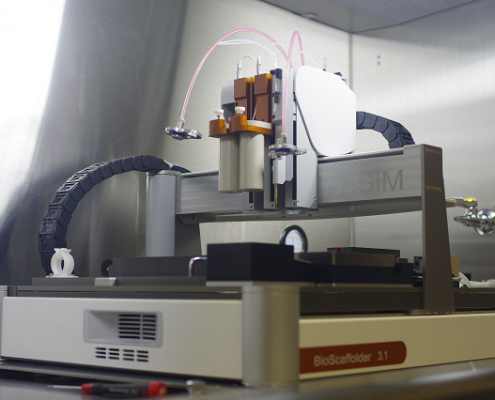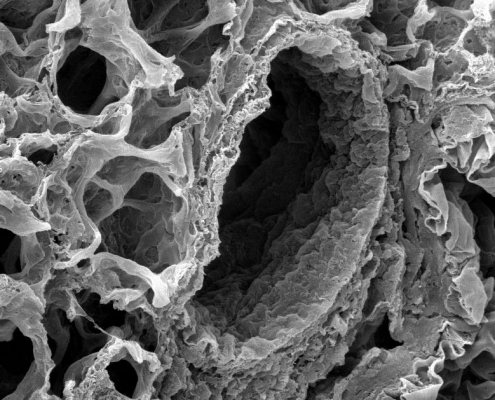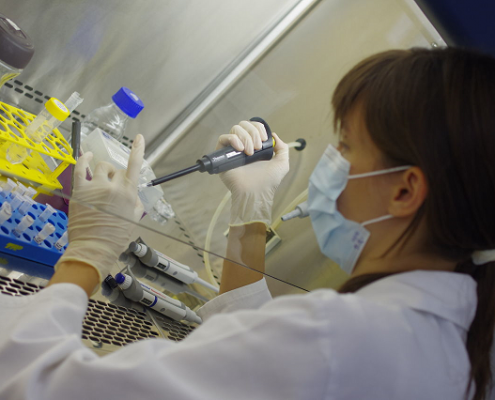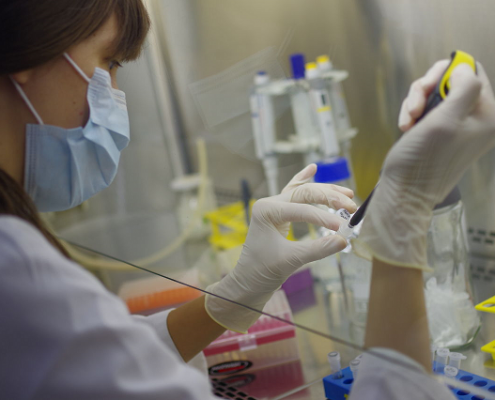CELL AND TISSUE REGENERATION
doc. MVDr. Aleš Hampl, CSc.
E-mail: ales.hampl@fnusa.cz
Key words
Pluripotent Stem Cells, Embryonic Stem Cells, Genomic Stability, Cell Cycle Regulation, Cell Differentiation, Tissue Engineering, Bioactive materials, Cell Authentication.
Research focus
- We investigate the properties of different types of human stem cells that are relevant to their utility in biomedicine
- Particular focus is on pluripotent stem cells, both embryonic and induced, but adult stem cell types are also studied. The biological phenomena that are being studied mainly include:
- genetic and genomic stability of stem cells because of its importance to safety in potential clinical applications
- role of cell cycle regulators and non-coding RNAs in establishing and maintenance of differentiated phenotypes and also in pluripotency
- effects of extracellular biodomains on behavior of stem cells, with an emphasis on their contribution to establishment of niche environment.
- Great effort is also dedicated to:
- development of methodologies for supporting growth of cells in engineered biocompatible scaffolds
- differentiation of stem cells towards defined somatic cell lineages (e.g. airway epithelia, neural crest derivatives).
- development of technologies important for production of cell products under cGMP standards
- Lastly, the group is involved in setting standards and rules related to ethical and safe use of stem cells in clinics, via its participation in International Stem Cell Forum and International Stem Cell Banking Initiative, Karolinska Institutet, Stockholm, Sweden, University of Newcastle, Newcastle, UK and Stem Cell Institute, MRC, Cambridge, UK
Main goals
- Establishment of clinical grade (GMP quality) lines of human embryonic stem cells and their functional evaluation.
- Understanding and manipulating biological properties of different types of human pluripotent stem cells (tissue, embryonic, induced) that are relevant to their safe application in clinics.
Technological equipment
- BioScaffolder 3.1 (GESIM, Germany) – printing of wide variety of 3D structures in micrometer dimensions, also with live cells.
- VEVO 2100 – high-frequency, high-resolution digital imaging platform with linear array technology and Color Doppler Mode for small animals.
- ImageXpress Micro XL (Molecular Devices, USA) – epifluorescence live cell imaging microscopy with high content screening capability.





